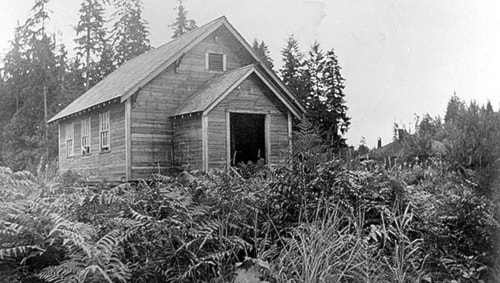The public has chosen 56 Japanese-Canadian historic places with significance to British Columbians of Japanese descent, and two are in the Maple Ridge/Pitt Meadows area.
April 1st marks the 75th anniversary of The Internment Period, when more than 22,000 Japanese-Canadians were forcibly removed from the B.C. coast, and incarcerated in camps in the Interior of the province, and beyond, between 1942 and 1949.
One building chosen was the Pitt Meadows Japanese Meeting Hall. It was built by the Pitt Meadows Japanese-Canadian Farmers' Association in the 1920s, and served as the meeting hall and social centre for the Japanese-Canadian population in Pitt Meadows, with the basement of the Hall serving as a Japanese-language school for children.
The neighbourhood of Haney in Maple Ridge was also chosen, as an important settlement area for Japanese-Canadians in the Fraser Valley. This group constituted almost one-third of the population prior to the Second World War, with approximately 220 Japanese-Canadian-owned farms thriving in Maple Ridge.
These places reflect the development and history of the province, North Vancouver-Lonsdale MLA Naomi Yamamoto and Minister Responsible for Multiculturalism Teresa Wat said Saturday morning.
Japanese-Canadians were uprooted from their livelihoods, businesses, homes, culture, and language base in what was called the Protected Area. It was particularly traumatic for those Japanese-Canadians who actually experienced being torn out of their homes in the Protected Area, sent to internment camps and other places, such as the sugar beet farms in Alberta and Manitoba, or to Ontario. Japanese-Canadians could not enter or return to the Protected Area until 1949, four years after the end of the war.
“Historic places hold community memories and untold stories. This was a dark part of B.C.’s history and it’s important that we remember and respect the impacts of these events on people both then and now,” said Wat. “I want to thank the Japanese-Canadian community for selecting these historic places to bring the stories of this part of British Columbia’s heritage and history to life, illustrating how Japanese-Canadians helped build B.C and contribute to our province’s rich cultural mosaic.”
In the government’s continued efforts to recognize and celebrate the diversity and multiculturalism of B.C., the final list of historic places to be provincially recognized for their heritage values and significance to the Japanese-Canadian community has been released. Following a public nomination process and evaluation by sector and community experts, 56 historic places were chosen to receive provincial recognition status, as part of the Provincial Recognition Program’s Japanese-Canadian Historic Places Project.
The 56 chosen sites will be listed with statements of significance on the B.C. Register of Historic Places. All 176 nominated places appear on an interactive map produced by Heritage BC.
Included in the recognized places are the internment camps, self-supporting sites, and road camps where Japanese-Canadians were held or forced to work during the internment years.
Other recognized places include fishing, mining and logging communities that had large Japanese-Canadian populations prior to 1942, many of which never saw the return of their former residents after 1949. The recognized places also celebrate the importance of education, civic responsibility and co-operative enterprise to the Japanese-Canadian community.
